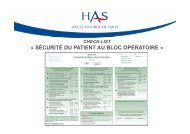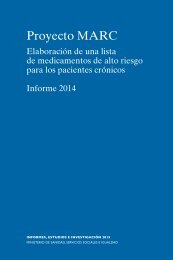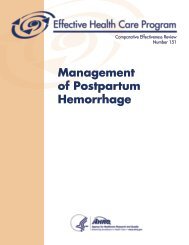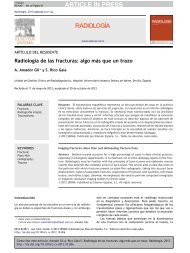for Invasive Procedures (NatSSIPs)
Z3q53
Z3q53
Create successful ePaper yourself
Turn your PDF publications into a flip-book with our unique Google optimized e-Paper software.
OFFICIAL<br />
In<strong>for</strong>mation about surgical care<br />
• Surgical complications and interventions to correct these.<br />
• Surgical site dressings, tubes, drains or packs.<br />
• Any further in<strong>for</strong>mation or instructions in relation to drains, e.g. whether<br />
suction should be applied or not.<br />
• Any intentionally retained objects and plans <strong>for</strong> their removal, if relevant.<br />
In<strong>for</strong>mation about anaesthetic care<br />
• ASA physical status.<br />
• Anaesthetic complications and interventions to correct these.<br />
• Any problems related to the airway.<br />
• Confirmation that intravenous lines and cannulae have been flushed.<br />
• Confirmation that the lumens of multi-lumen catheters have been both<br />
clamped shut and occluded with caps or needleless connectors.<br />
• Confirmation that any throat pack has been removed.<br />
• Intravenous fluids and blood products given, with estimated losses<br />
Juan’s story*<br />
Juan is a 68-year-old man who underwent a total hip replacement. The surgical<br />
team who cared <strong>for</strong> him work together regularly and are strong supporters of<br />
the Five Steps to Safer Surgery. During the Safety Briefing, the hip implant<br />
sizes were discussed. The implant consists of three components: socket<br />
(inserted into the pelvis), stem (inserted into the femur) and head (placed on<br />
top of the stem). Each component is packed separately in its own labelled box.<br />
Each component can be of a different size to suit the patient, and each has<br />
specific measurements. However, the head has two measurements: the head<br />
diameter, which must fit snugly with the socket component, and the length,<br />
which is an independent variable. One combination of these implant sizes was<br />
considered most likely to suit the patient, but another was brought into theatre<br />
as a contingency.<br />
The surgeon made the final size decisions regarding size during a visual<br />
examination after the start of surgery. She was passed the correct size socket,<br />
which she put in place. When ready <strong>for</strong> the head of the implant, the surgeon<br />
asked <strong>for</strong> a “+5” - a reference to the length, not the diameter of the head. The<br />
diameter is not normally specified at that point as it is automatically defined by<br />
the size of the socket, which has already been implanted by that time. It was<br />
seen as a given by all involved. The circulating practitioner passed the head to<br />
the scrub practitioner, who confirmed the length as “+5” but did not read out the<br />
diameter. The surgeon assumed that she was being passed a head that<br />
matched the socket, but this was not the case – the socket and head were<br />
different diameters. The operation was completed; the sticker from the implants<br />
was attached to the operation notes and entered into the computerised national<br />
register.<br />
32











